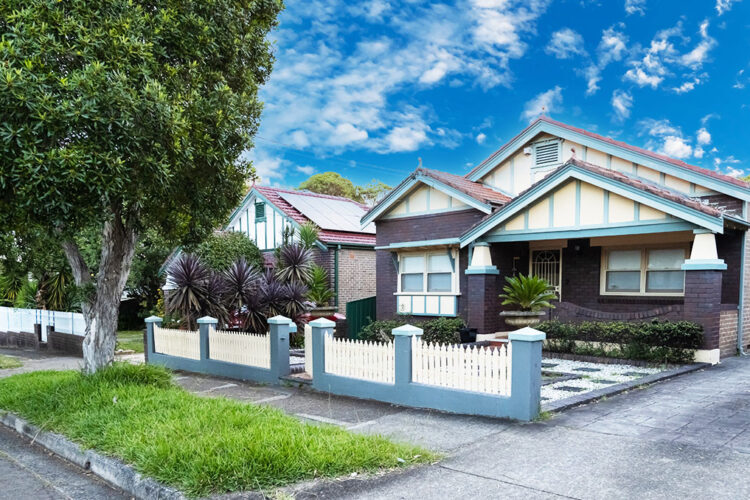As the value of residential property in Australia has continued its fall, first home buyers’ purchases have increased, according to CoreLogic.
Housing market data has confirmed the value of Australia’s 10.8 million residential real estate market was $9.6 trillion at the end of September, continuing its fall from August.
Housing values continue fall
As interest rates climb, global inflation rate peaks and recession fears are escalating, and housing values are dragging.
The CoreLogic data cited dwelling values across Australia were 1.7 per cent higher than they were this time last year, down significantly from a cyclical peak of 22.4 per cent recorded in the 12 months to January 2022.
While the housing market downswing has become more broad-based, the monthly rate of decline slowed to a fall of 1.4 per cent in September, from 1.6 per cent through August.
Property data and insights business PropTrack’s senior economist Paul Ryan said the easing in declines came as sellers hit the market for the typically busy spring season.
“The moderation in price falls does not herald the end of declines,” Mr Ryan said.
Looking at the three-month change to September, Australia’s dwelling values fell 4.1 per cent, with the regions reporting a 3.6 per cent fall, compared with a 4.3 per cent fall in the capitals.
Comparatively, for the year to September, the regions have increased 10.1 per cent, while the capitals fell 0.7 per cent, accounting for the 1.7 per cent increase nationally.
Taking a closer look at the property market across the capitals, Adelaide and Brisbane remained the strongest (up 19.2 per cent and 13.4 per cent over the year, respectively). This fell to a 6.2 per cent increase in Darwin, 4.1 per cent in Perth, and 4 per cent in Canberra, and 2 per cent in Hobart.
Melbourne and Sydney both reported property declines for the year (-3.9 per cent and -6 per cent, respectively).
Conversely, all regional areas, excluding South Australia, reported a price fall over the year to September. However, it’s important to note that these price values remain up when compared to the peak in April 2021.
Sales volumes trend down
CoreLogic’s data also revealed sales volumes were trending lower as buyer demand slows. It estimated that in the 12 months to September, there were 566,609 sales nationally, down -5.2 per cent compared to the previous year.
This is partly because, at the national level, properties are taking longer to sell. For example, in the three months to September, the median days on market was 35, up from a recent low of 20 days over the three months to November.
Similarly, vendor discounting has also increased from the recent low of -2.9 per cent recorded in the three months to November last year to -4.2 per cent in the three months to September.
The data showed the flow of new listings was 14.3 per cent lower than the previous five-year average, but the volume had ticked up over the month, with 34,368 newly advertised dwellings listed for sale in the four weeks to 2 October.
CoreLogic estimated new listings are “falling faster than sales volumes”, causing total listings to trend lower.
“There was more than one sale for each new property listed through September, depleting total stock levels,” CoreLogic estimated.
Clearance rates trended higher through September, with the combined capitals averaging 59.8 per cent in the five weeks to 25 September. While that figure was up from the average recorded over August (56.8 per cent), it remained down from 74.3 per cent in the equivalent period of 2021.
Drag flows through to mortgage figures
The data also revealed new housing finance fell 3.4 per cent in August, totalling $27.4 billion, which was a “milder decline” than the 8.5 per cent drop through July.
Overall, mortgage debt accounted for $2.1 trillion.
Nationally, investor finance comprised 32.3 per cent of new mortgage lending through the month of August, marking a 4.8 per cent drop in August, below the decade average of 34.7 per cent.
“The investor cohort has generally been most sensitive to rising rates, with the investor portion of newly secured financing declining across most states,” head of research at CoreLogic Eliza Owen said.
While owner-occupier lending also fell 2.7 per cent, first home buyer financing “shot up 7 per cent in August”, following declines in June and July, she said.
This resulted in the portion of first home buyer finance increasing to 23.4 per cent of total owner-occupier lending, which remains below the decade average of 23.8 per cent.
Western Australia reported 31.6 per cent of its owner-occupied purchases were first home buyers, followed by 27.7 per cent in Tasmania and 26.7 per cent in Victoria. This was followed closely by ACT (26.4 per cent), Northern Territory (26.1 per cent), and Queensland (22.4 per cent). First home buyer finance in NSW accounted for 20.3 per cent, and 21.5 per cent in South Australia.
As the cash rate hits 2.6 per cent, CoreLogic’s August data revealed the average long-term fixed rates (greater than three years) for new loans increased to 5.58 per cent for the investor segment and 5.14 per cent for new owner-occupiers.
Fears grow for the large cohort of borrowers on fixed-rate loans nearing maturity, with the Australian Prudential Regulation Authority (APRA) expecting “repayment shock” and defaults.
APRA data also found that while the amount of potentially risky mortgage lending has generally trended down, the portion of lending on interest-only terms rose to 19.8 per cent over the three months to June.


